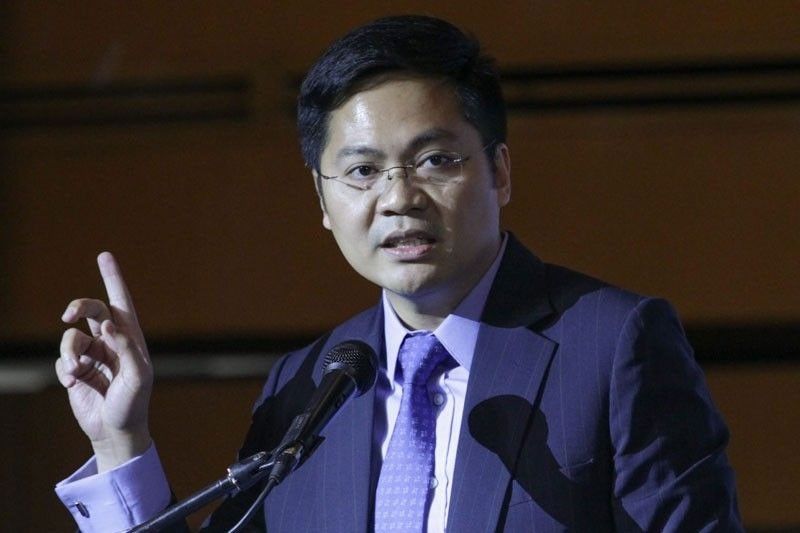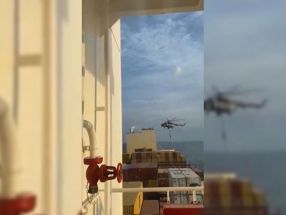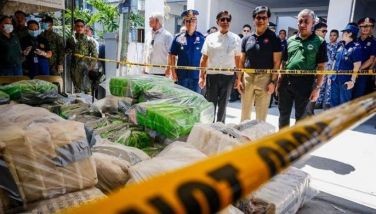Palace to announce new alert levels by February 14

MANILA, Philippines — The government’s pandemic task force is expected to announce by Feb. 14 the updated alert levels as it continues to assess existing restrictions in light of the slowdown in the rate of COVID-19 infections.
Acting presidential spokesman Karlo Nograles said the Inter-Agency Task Force for the Management of Emerging Infectious Diseases (IATF) is scheduled to meet today to make a preliminary assessment of the pandemic situation.
Officials will hold another meeting this weekend to examine the latest data from various regions and to decide on the alert levels that will take effect from Feb. 16 to 28.
“We may announce the new alert levels, either Feb. 13 or Feb. 14, Valentine’s Day. So let’s wait for it,” he told state-run Radyo Pilipinas yesterday.
“(We want to) make the assessment closer to Feb. 16 so that we can see the latest numbers when we make a final decision for the alert level system for Feb. 16 until the end of February,” he added.
The Philippines’ classification has improved from high to moderate risk because of a downward trend in the number of infections, but officials have reminded the public to continue following health standards like frequent hand washing, observing physical distance and wearing of face masks.
As of Feb. 7, the majority of regions, including Metro Manila, is at moderate risk, while four others – Davao, Zamboanga peninsula, Soccsksargen (South Cotabato, Cotabato, Sultan Kudarat, Sarangani, General Santos) and Northern Mindanao – are at high risk.
Eastern Visayas, Bicol, Mimaropa (Mindoro, Marinduque, Romblon, Palawan) and the Bangsamoro Autonomous Region in Muslim Mindanao are classified as low risk.
In terms of the availability of intensive care unit beds, only five regions – Davao, Northern Mindanao, Caraga, Western Visayas and Cagayan Valley – are at moderate risk as of Feb. 6.
The rest of the regions are classified as low risk.
Last Tuesday, the Metropolitan Manila Development Authority (MMDA) said Metro Manila mayors are ready to open more sectors and businesses once the National Capital Region (NCR)’s classification is downgraded from Alert Level 2 to the most lenient Alert Level 1.
MMDA officer-in-charge and general manager Romando Artes said mayors may recommend a shift to Level 1 if the number of cases in Metro Manila continues to decline.
Under Alert Level 1, intrazonal and interzonal travel will be allowed regardless of age and comorbidities. All establishments, persons or activities may operate, work or be undertaken at full on-site of venue or seating capacity as long as minimum public health standards are followed.
In-person classes for basic education, however, should still secure the approval of the Office of the President.
Assess campaign first
Before downgrading the alert level in Metro Manila, better check first the effects of the start of the election campaign on the number of COVID-19 cases, Justice Secretary Menardo Guevarra said yesterday.
Guevarra, a member of the IATF, said that while he would have wanted the NCR to be placed under Alert Level 1 and loosen the restrictions in order to boost the economy, he presently opted to stay on the side of caution.
He expressed belief it would be better to first assess the effects of mass gatherings being held in line with the May 9 national and local elections, if these would trigger a rise in the number of COVID-19 cases.
“I would really want to see the NCR liberated to Alert Level 1 so that we could keep the momentum of economic recovery going, but I think we need a little more time to observe the effects of recent mass gatherings relating to the start of the election campaign period,” Guevarra said.
“If the metrics remain stable, if not further go down, I think the IATF may consider de-escalating the NCR by March. What we don’t want to see is a reason to ratchet back to a higher alert level, as that will really be counter-productive,” he added.
The Department of Trade and Industry (DTI) is backing a gradual easing of Metro Manila to Alert Level 1 to allow more businesses to operate and people to go back to work.
“If we go down to Alert Level 1, which is also what (Trade) Secretary Mon (Lopez) wants to happen, it should be done slowly because the virus is still there. So we still have to follow health protocols,” Trade Undersecretary Ruth Castelo said in an interview with dzBB yesterday.
Earlier, presidential adviser for entrepreneurship Joey Concepcion said he is pushing for a shift to Alert Level 1 by March, particularly for the NCR and areas with vaccination rates of 70 percent and higher, as COVID-19 cases are expected to decline.
The NCR as well as Batanes, Bulacan, Cavite, Rizal, Biliran, Southern Leyte and Basilan are under Alert Level 2 until Feb. 15.
Under Alert Level 2, establishments are allowed to operate at 50-percent indoor capacity and 70-percent outdoor capacity.
Business establishments in an area with high vaccination rate can operate at an additional 20 percent capacity, while those with safety seals are allowed an additional 10 percent capacity.
When the current restrictions are eased and businesses are allowed at full capacity, Castelo said 1.5 million businesses would be able to operate and more people to return to work.
She added that when the NCR and other areas moved to Alert Level 2 from Alert Level 3, the DTI estimated that 100,000 to 200,000 persons were able to return to work.
She also emphasized that health protocols would still have to be followed even when businesses are allowed to operate at full capacity.
For the DTI, safety seals, which are secured from government agencies to show the business establishments follow health protocols against COVID-19, also remain important.
“This is our assurance as customers that protocols are followed by establishments we go to,” Castelo said.
DOLE also backs move
The Department of Labor and Employment (DOLE) yesterday also backed calls to place the NCR under Alert Level 1, saying this will help revive the economy.
At a press briefing, Labor Secretary Silvestre Bello III said they support the economic cluster of the government in pushing for the de-escalation of the alert level status in the NCR.
“The shift from Alert Level 3 to 2 was a great help. It revived business. And if business is revived, there will be more employment opportunities,” Bello added.
The labor chief gave assurance that he had ordered an intense labor inspection of business establishments to make sure that they comply with labor laws and occupational safety and health standards.
Bello said he wants to make sure that workplaces are implementing all health and safety protocols to prevent the rise in COVID-19 cases in the region.
“Once we have a better situation, at least in the NCR, this will probably prompt the IATF to lower the Alert Level from 2 to 1,” he added. – Louella Desiderio, Sheila Crisostomo, Evelyn Macairan
- Latest
- Trending



























